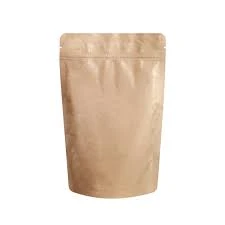- Afrikaans
- Albanian
- Amharic
- Arabic
- Armenian
- Azerbaijani
- Basque
- Belarusian
- Bengali
- Bosnian
- Bulgarian
- Catalan
- Cebuano
- chinese_simplified
- chinese_traditional
- Corsican
- Croatian
- Czech
- Danish
- Dutch
- English
- Esperanto
- Estonian
- Finnish
- French
- Frisian
- Galician
- Georgian
- German
- Greek
- Gujarati
- haitian_creole
- hausa
- hawaiian
- Hebrew
- Hindi
- Miao
- Hungarian
- Icelandic
- igbo
- Indonesian
- irish
- Italian
- Japanese
- Javanese
- Kannada
- kazakh
- Khmer
- Rwandese
- Korean
- Kurdish
- Kyrgyz
- Lao
- Latin
- Latvian
- Lithuanian
- Luxembourgish
- Macedonian
- Malgashi
- Malay
- Malayalam
- Maltese
- Maori
- Marathi
- Mongolian
- Myanmar
- Nepali
- Norwegian
- Norwegian
- Occitan
- Pashto
- Persian
- Polish
- Portuguese
- Punjabi
- Romanian
- Russian
- Samoan
- scottish-gaelic
- Serbian
- Sesotho
- Shona
- Sindhi
- Sinhala
- Slovak
- Slovenian
- Somali
- Spanish
- Sundanese
- Swahili
- Swedish
- Tagalog
- Tajik
- Tamil
- Tatar
- Telugu
- Thai
- Turkish
- Turkmen
- Ukrainian
- Urdu
- Uighur
- Uzbek
- Vietnamese
- Welsh
- Bantu
- Yiddish
- Yoruba
- Zulu
paper wrap packaging
The Revolution of Paper Wrap Packaging A Sustainable Solution for Modern Consumption
In recent years, as environmental consciousness has surged among consumers and businesses alike, the packaging industry has seen a significant shift towards more sustainable practices. One of the most promising developments in this realm has been the rise of paper wrap packaging. This innovative packaging solution not only offers functional benefits but also aligns with the global pursuit of environmentally friendly alternatives to traditional plastic packaging.
Understanding Paper Wrap Packaging
Paper wrap packaging refers to the use of paper materials to create wrappers, bags, and secondary packaging solutions. This type of packaging can vary widely in its construction, ranging from simple kraft paper wraps to more sophisticated designs that integrate additional features such as moisture barriers or grease-resistant coatings. The versatility of paper allows it to be tailored for a multitude of products, including food items, cosmetics, electronics, and more.
One of the primary components of this trend is the use of renewable resources. Unlike plastic, which is derived from fossil fuels and takes centuries to decompose, paper comes from trees, a renewable resource. Moreover, many paper wrap products utilize recycled materials, further reducing the demand for virgin resources. This circular approach to production emphasizes sustainability and minimizes waste, addressing critical environmental challenges.
Advantages of Paper Wrap Packaging
The advantages of paper wrap packaging extend beyond just sustainability. Paper wraps are often more lightweight than traditional packaging materials, reducing transportation costs and energy consumption during shipping. Additionally, they provide excellent printability, allowing brands to convey their story and values effectively through eye-catching designs and eco-friendly inks.
Furthermore, paper wrap packaging is generally perceived as more consumer-friendly. Many consumers prefer paper packaging for its aesthetic appeal and tactile qualities, associating it with a sense of quality and authenticity. The natural feel of paper evokes feelings of trust, which can enhance the overall product experience. As a result, businesses that adopt paper wrap packaging can differentiate themselves in a crowded market, appealing to eco-conscious consumers who prioritize sustainable practices.
paper wrap packaging

A Solution for Food Packaging
The food industry has been particularly receptive to the transition to paper wrap packaging. Many food businesses are replacing plastic with paper wraps for snacks, sandwiches, and takeaway products. These paper wraps not only serve to protect food items during transport but also enhance shelf life through specialized coatings that resist moisture and fat. Innovations such as compostable paper wraps are emerging, which are not just biodegradable but also designed to break down within weeks in appropriate conditions.
Moreover, effective branding on paper wraps allows food businesses to communicate their commitment to sustainability directly to consumers. This transparency fosters brand loyalty, as consumers increasingly seek out brands that reflect their values. Consequently, companies that utilize paper wrap packaging are not only contributing to environmental preservation but also enhancing their market competitiveness.
Challenges and Future Directions
Despite the clear advantages, there are challenges facing the widespread adoption of paper wrap packaging. The cost of sustainable paper production can still be higher than that of traditional plastic materials. Companies must invest in research and development to create durable, cost-effective paper solutions that meet consumer demands.
Looking ahead, technology will play a crucial role in overcoming these hurdles. Advancements in paper science, such as the development of stronger, more resilient fibers and coatings, are necessary to improve the performance of paper wraps. Additionally, as recycling infrastructures evolve, the uptake of recycled content in paper wrap production can reduce costs and environmental impact further.
Conclusion
As the global call for sustainable practices continues to grow louder, paper wrap packaging stands out as a viable alternative to conventional plastic materials. By embracing paper as a primary packaging solution, businesses can respond to consumer demands for sustainability while benefiting from enhanced brand appeal and operational efficiencies. The future of packaging is undoubtedly moving towards sustainable solutions, and paper wrap packaging is at the forefront of this revolution, promising a greener planet for generations to come.













